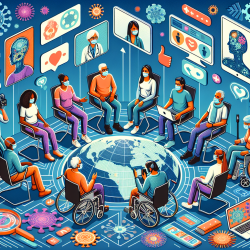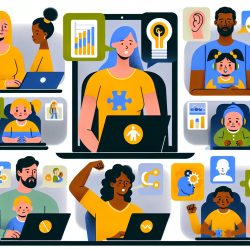Introduction
The COVID-19 pandemic has reshaped many facets of our lives, not least the realm of community-based rehabilitation (CBR) and community-based inclusive development (CBID). The pandemic posed unique challenges to these programs, especially in providing essential services to persons with disabilities. The research article "Community-based rehabilitation/community based inclusive development functioning during the COVID-19 pandemic: A secondary analysis of qualitative data" sheds light on how these programs adapted and what we can learn to improve future practices.
Impact of COVID-19 on CBR/CBID Programs
As the pandemic unfolded, many CBR/CBID programs faced significant disruptions. Lockdowns and social distancing measures halted in-person services, leaving many individuals with disabilities without access to crucial support. The study highlights how financial constraints and lack of access to technology further exacerbated these challenges, particularly in rural areas.
The Role of Technology
Despite these challenges, technology emerged as a beacon of hope. Online platforms became vital tools for disseminating information about COVID-19 and for continuing rehabilitation and educational services. The study found that many CBR/CBID programs successfully leveraged technology to provide remote services, such as online exercise programs and telehealth consultations.
Strategies for Practitioners
For practitioners in the field, the study offers several key takeaways:
- Embrace Technology: Utilize digital platforms to reach clients and provide services remotely. This is especially crucial during crises when in-person interactions are limited.
- Ensure Accessibility: Work towards making technology accessible to all, including those in rural areas and those with limited digital literacy.
- Advocate for Inclusivity: Push for policies that ensure disability-inclusive disaster management and accessible information dissemination.
- Collaborate with Stakeholders: Build partnerships with government bodies and private organizations to enhance service delivery and resource allocation.
Conclusion
The pandemic has underscored the importance of adaptability and innovation in community-based rehabilitation. By embracing technology and advocating for inclusivity, practitioners can ensure that services continue to reach those who need them most, even in the face of unprecedented challenges.
To read the original research paper, please follow this link: Community-based rehabilitation/community based inclusive development functioning during the COVID-19 pandemic: A secondary analysis of qualitative data.










